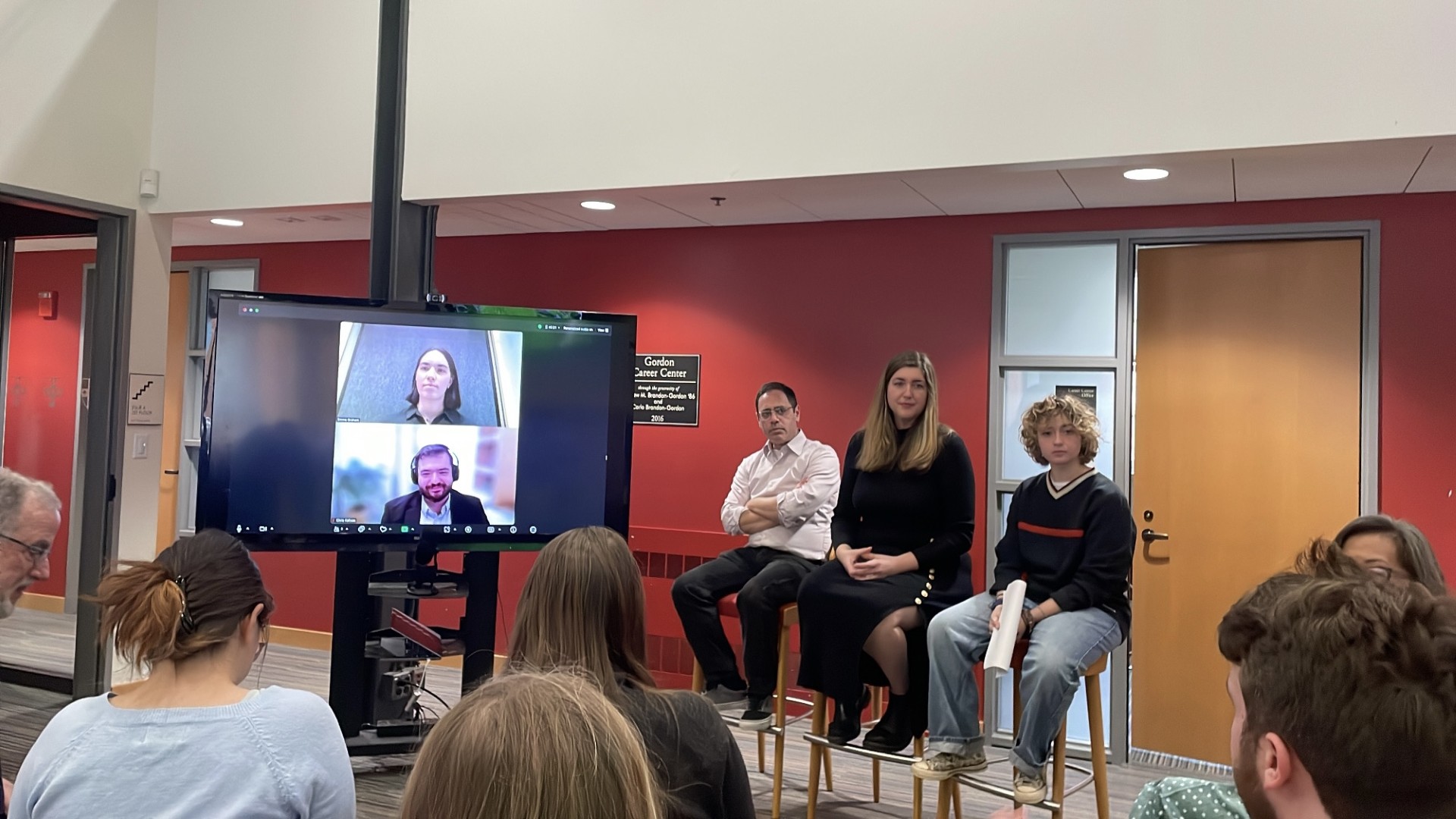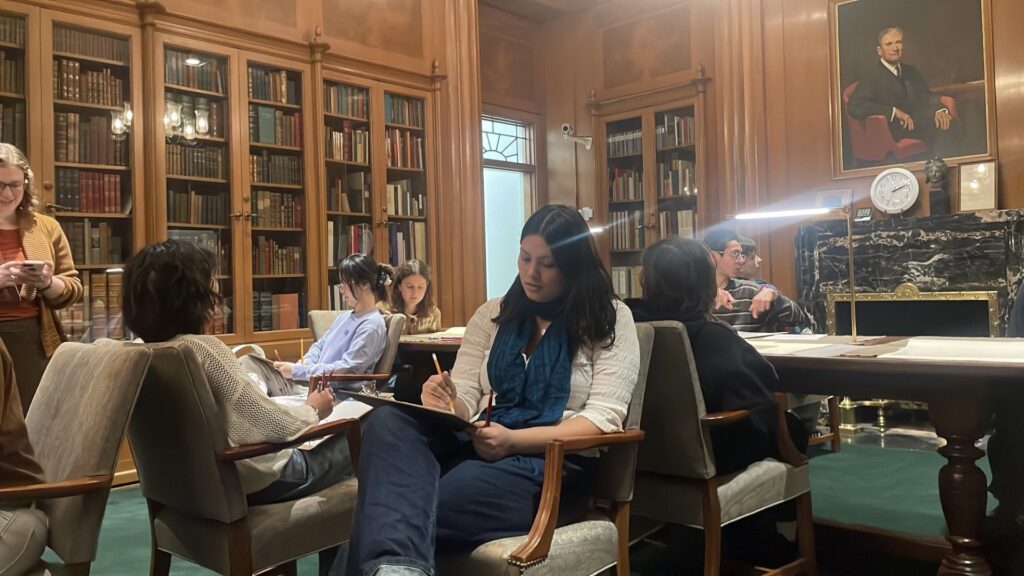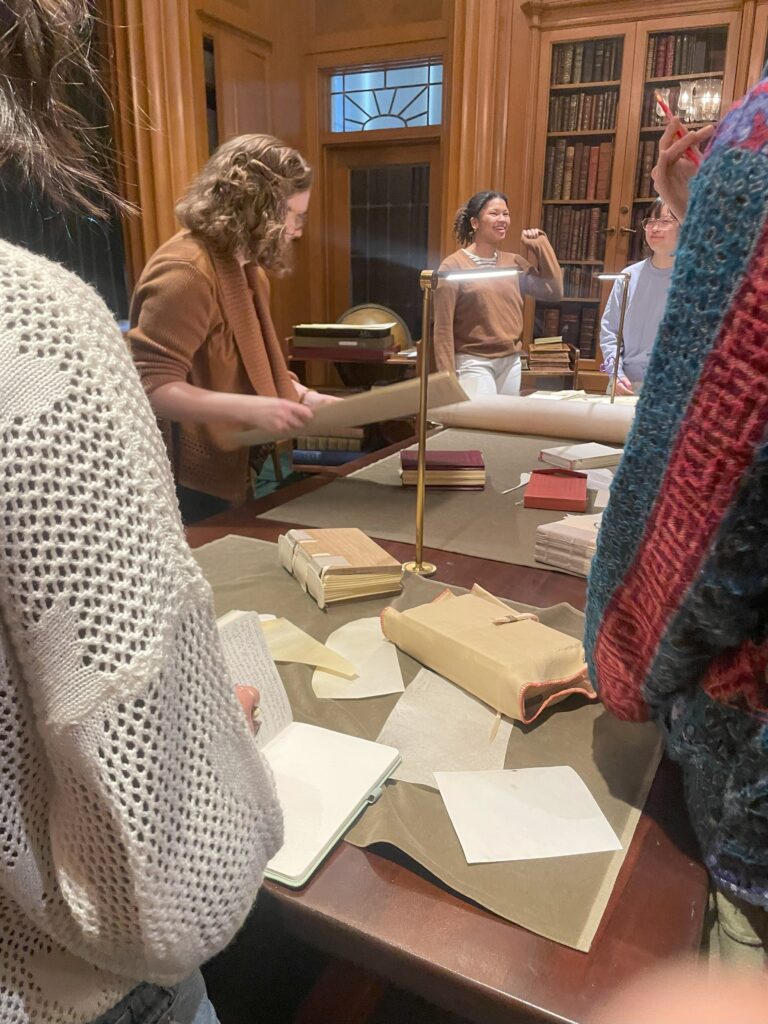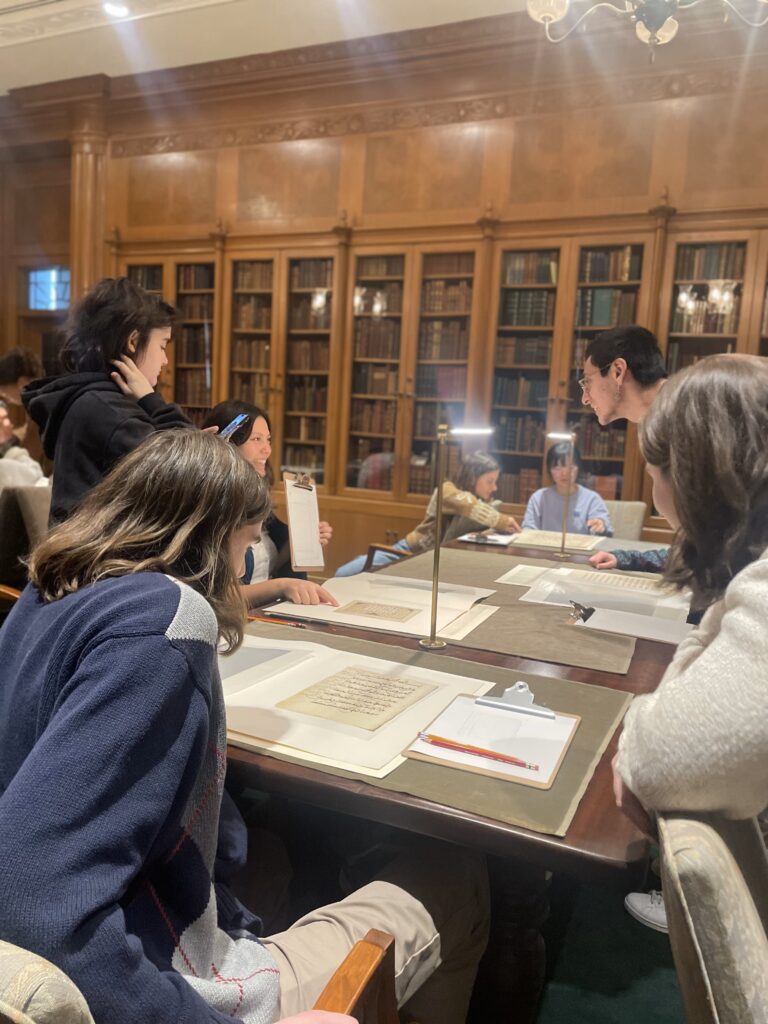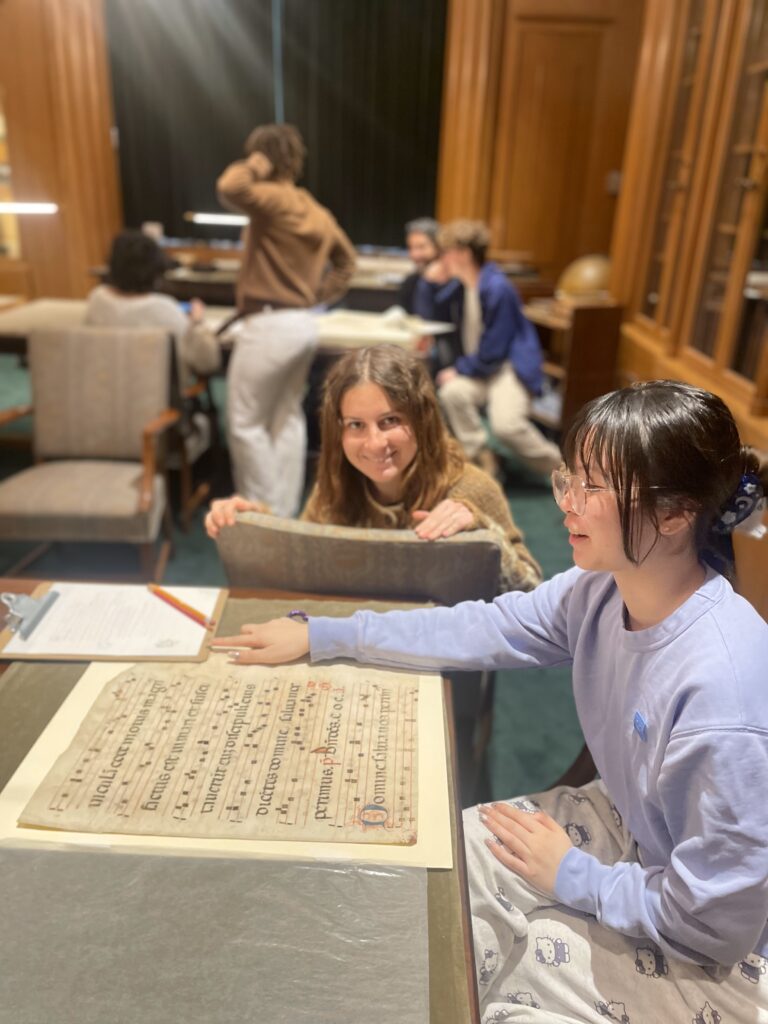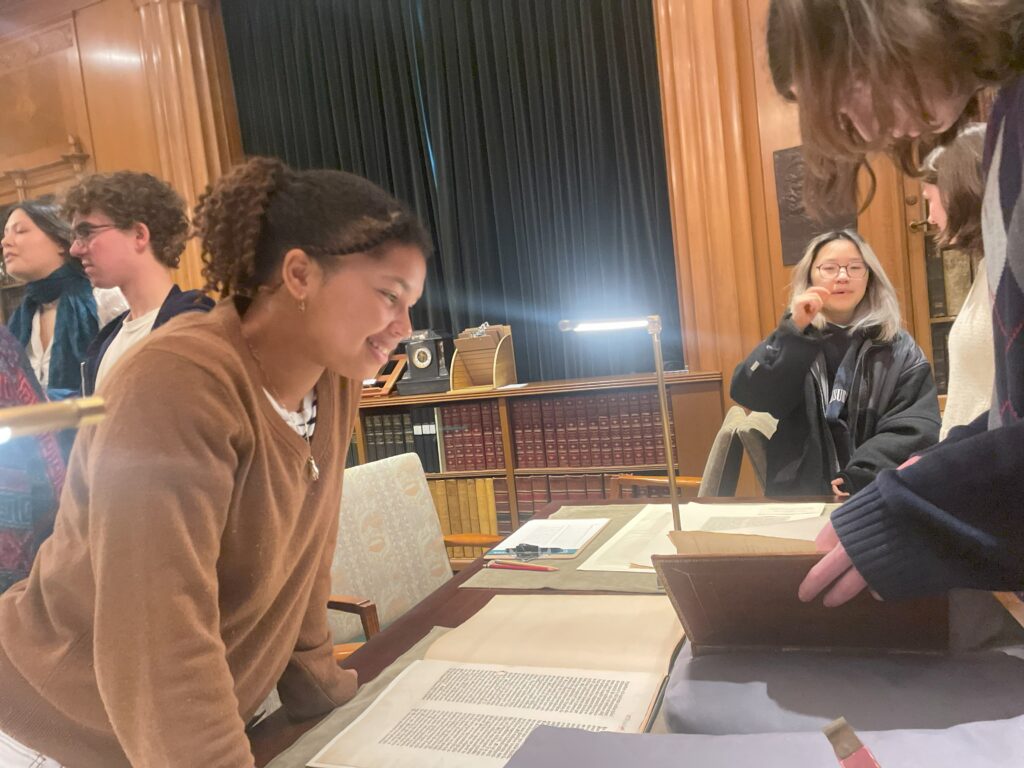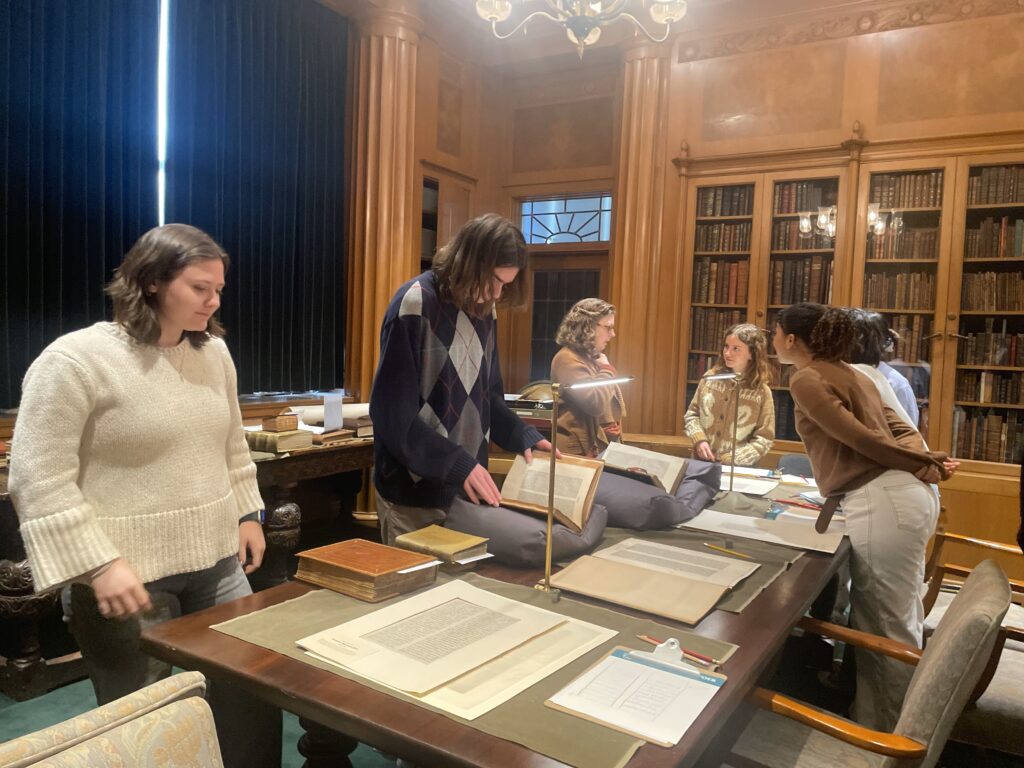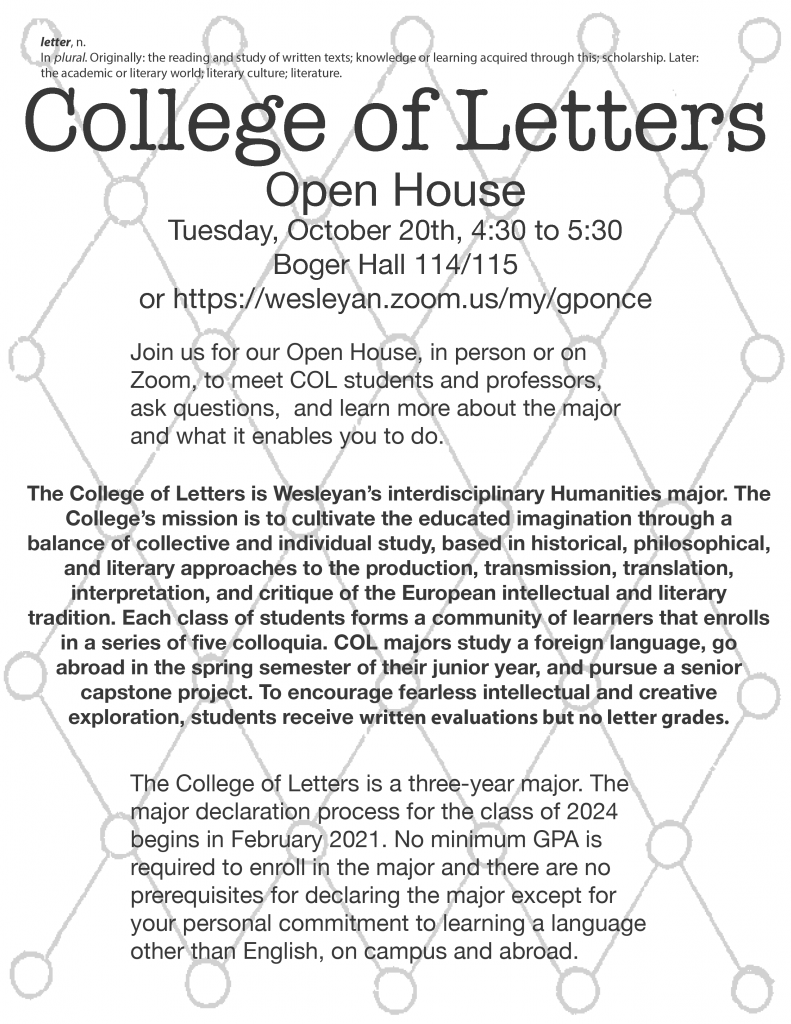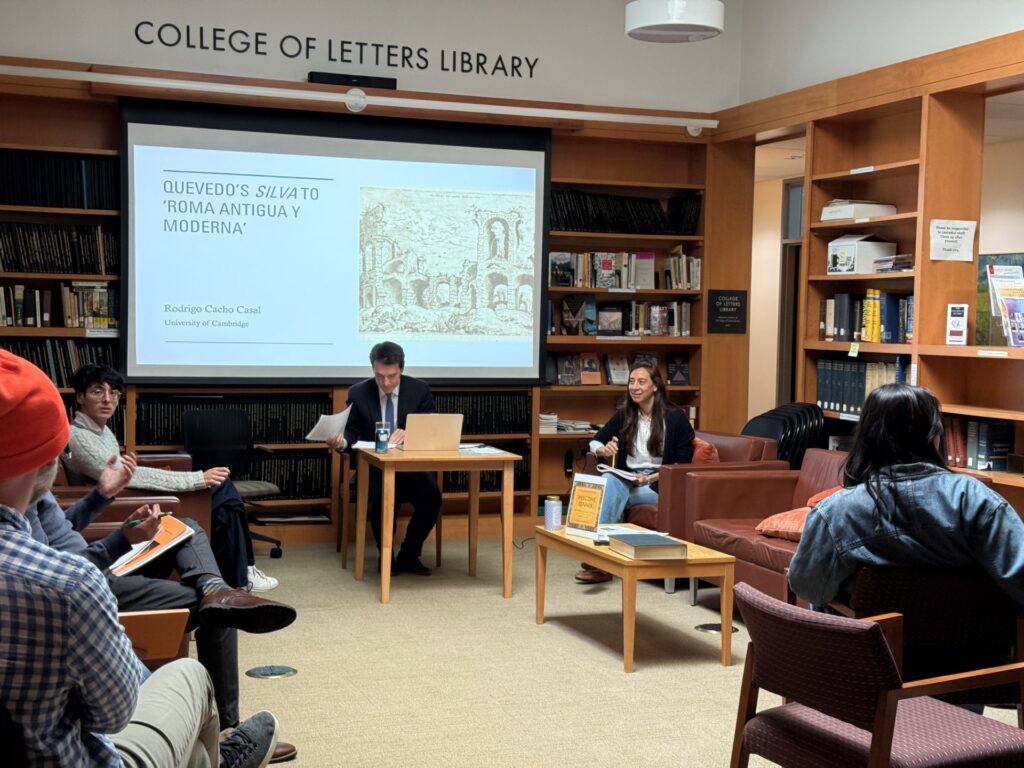
“What is a Ruin?”
On October 15th, the College of Letters hosted a masterclass in the COL library with Professor Rodrigo Cacho, who teaches Early Modern Iberian and Latin American Literature at the University of Cambridge. The masterclass facilitated a guided reading and discussion of Baroque author Francisco de Quevedo’s silva to “Roma antigua y moderna”. Prior to the masterclass, Professor Cacho joined COL juniors in discussing the silva in the Early Modern Period colloquium taught by Professor Ponce-Hegenauer and Professor Plass.
Professor Cacho terms the silva “complex rewriting” of French Joachim du Bellay’s “Antiquitez de Rome”, a selection of poetry that COL juniors had also recently read and discussed in colloquium.
“What is a Ruin?” was Professor Cacho’s question to attendants, kicking off the lecture. Responses ranged from remnants of a historic structure, to a material entrypoint for the onlooker into the history of the ruin. Guiding attendants through the nuances of the English translation and the intertextual artistic tradition within which Quevedo was writing, Professor Cacho unpacked how the text constructs memory, empire, and the transmission of culture by using “Rome” as a symbol for the achievements of Latin literature within the classical tradition, among other tenors. Students also gained an understanding of the transformation of literary traditions from the Renaissance period to the Baroque by reading the two authors.
The lecture facilitated close readings focussing on various figures and symbols within the text: the Tiber and other rivers, Lamia and Flora as mythical figures, as well as the role of the newcomer in understanding how Quevedo poeticises a timeless understanding of the history of Rome.
“The city described by Du Bellay and Quevedo is as much a historical artifact as a metaphysical one. Rome is a metaphor for knowledge, which is both an endless archive of memory and a space for creativity… The author is looking at history with the universal eyes of memory as it was conceived in Platonic terms. All times are but one time, all art is but one art.” Professor Cacho wrote in his paper, “The Memory of Ruins: Quevedo’s Silva to “Roma antigua y moderna”, which juniors read as supplementary reading alongside Quevedo’s silva.
The silva begins by addressing an undefined newcomer beholding Rome’s ruins. As most COL juniors themselves were new readers of Du Bellay and Quevedo, they shared how the masterclass further informed their readings.
“The lecture guided me through the reading and inspired me to think so much more about the poem and its effects,” said Cassie Wo ’27, a COL junior.
“I really enjoyed hearing about Cacho’s comparison of the content of Quevedo’s “Roma, Moderna y Antigua” and the form used to represent it. More specifically, the dichotomy between the antiquity of the Roman ruins and the modernity (at the time) of the metric form of the Silva, which was even considered experimental or avant garde,” said Ben Schietinger ’27, also a COL junior, who had presented on the silva in colloquium.
After the lecture, students met with Professor Cacho to discuss their own readings of the text and ask questions.
Written by COL Major Janhavi Munde, ’27



